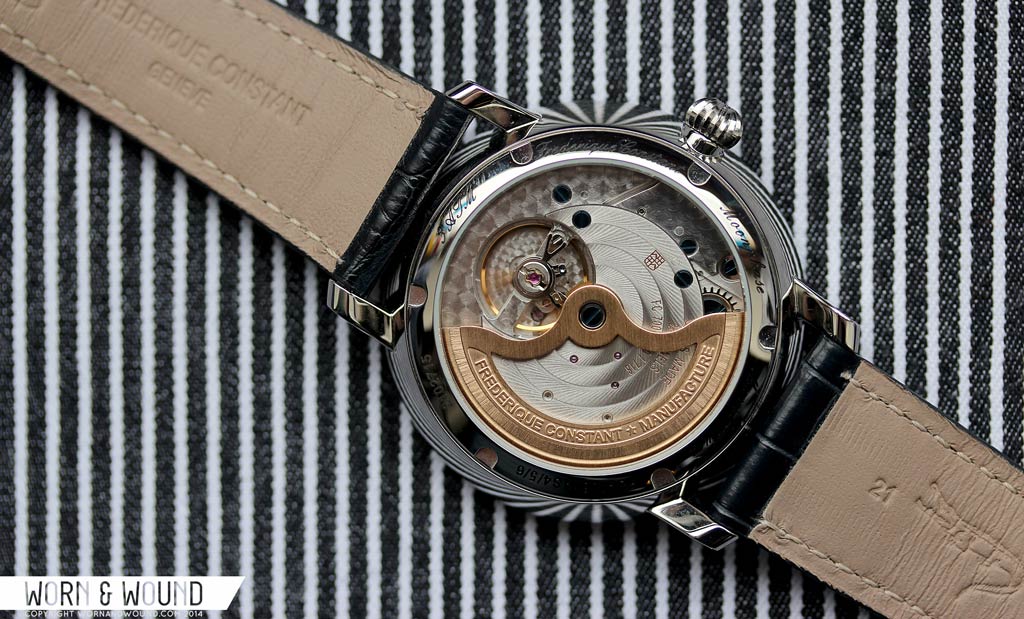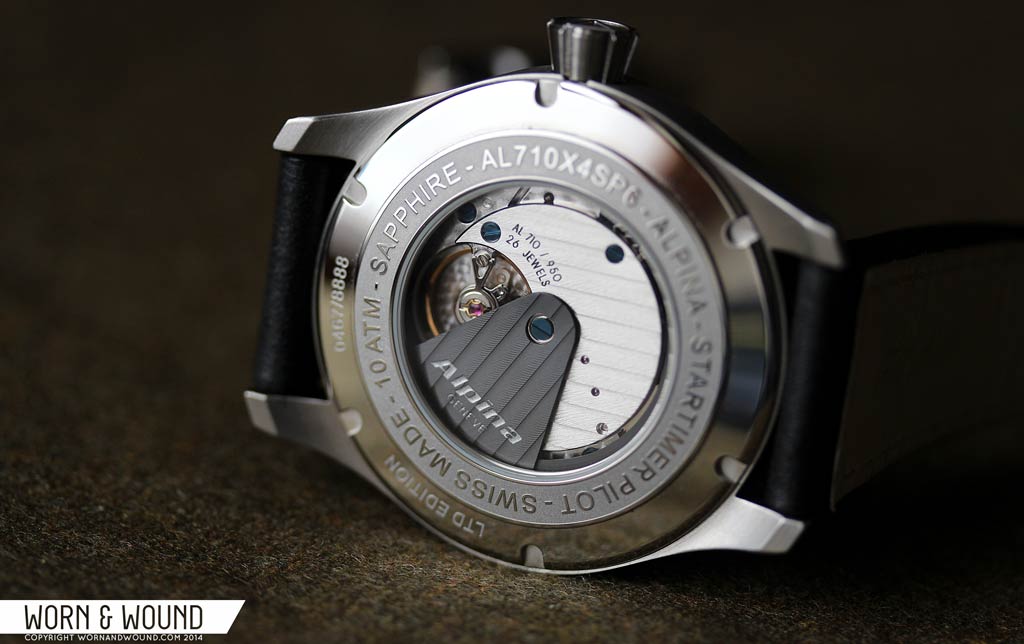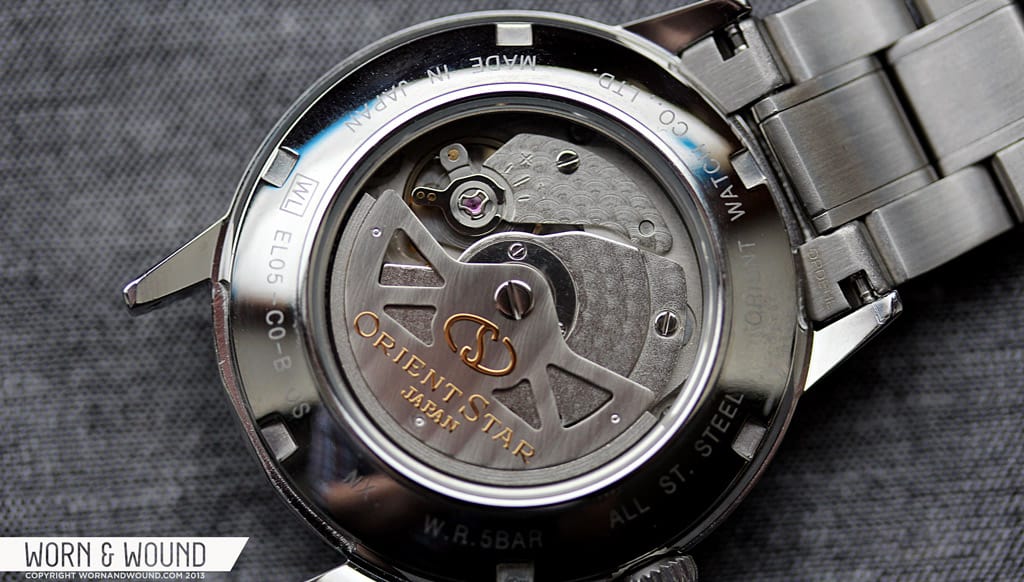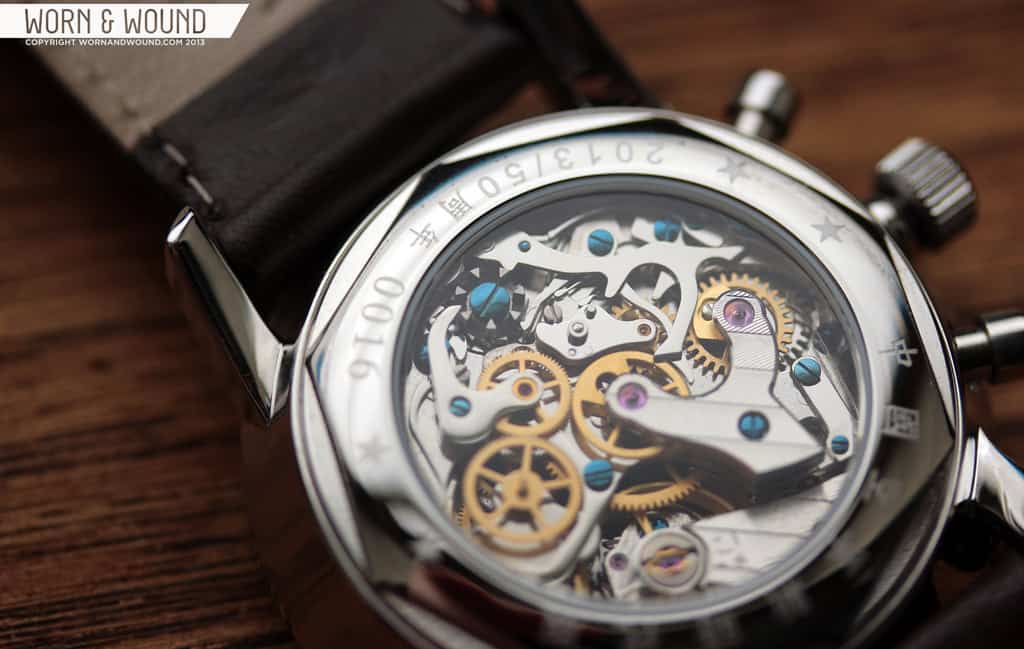Recently, we’ve run a few articles on watches with “in-house” movements, articles that have prompted discussions in the comments regarding the validity of the term. So, we thought it would make for a great topic for a round-table discussion.
So, the question posed is: “what does ‘in-house’ mean and what should ‘in-house’ mean?”
Let us know your thoughts in the comments!
Mark McArthur-Christie
If you want to put the watch cat amongst the horological pigeons, just about the best way to do it is talk about “in house” movements. As we saw in 2014, “in house” means different things to different people. Sometimes very different things indeed.
Most watch buyers believe it means “a watch, the components of which have been made by the company whose name is on the dial.” Simple enough.
Something can’t be a bit in-house. It either is or it isn’t. But, like most definitions, it’s the detail that matters, particularly of those two crucial words “components” and “made”.
A standard Rolex perpetual has 220 components. At another extreme, a Patek Philippe Ref. 5175 has 1,366 in the movement, plus another 214 in the case. That includes everything from screws to plates to dials to the balance. Tooling up for that level of manufacture is wince-makingly, painfully expensive. To do so, you either need to be very small (think George Daniels or the wonderful Roger Smith) or very, very large (think Seiko).
The issue comes when watch marketers trumpet in-house movements when they’re actually fitting modified motors bought-in from other manufactures, co-developed or not. Some of them do an incredible amount of work to upgrade and improve those movements – and damn fine they are too – but that doesn’t make them in-house.
The industry’s marketing departments have set themselves up for a massive fall by lazily wallpapering the ‘in-house’ term over any watch that has a tweaked movement rather than trying to seek real points of difference.
I think a more significant question might be “does it matter?” Is an in-house movement better than a standard or modified engine? No. In fact, it may be more expensive to service and find parts for. What matters is that watch buyers get told the truth.
Watch marketers – over to you.
Christoph McNeill
An “in-house” movement is generally accepted to be one that is made (nearly) entirely by the company selling the watch. Of course, since the Swatch group owns ETA, you could reasonably say that any brand in their lineup that uses an ETA movement is “in-house”. That’s a bit of a stretch for me. What the term should mean is that the movement is truly and completely made by the specific brand in question. Seiko for instance makes everything in their movements, including the hairsprings and even the oils. THAT is in-house! Sadly, Seiko never gets the mainstream props that they deserve, but that’s another topic entirely. All that said, it’s really nice to see more and more smaller companies designing and making their own movements. This trend will continue as ETA movements continue to dry up for non-Swatch companies.
Zach Weiss
The term in-house certainly has gotten more and more complicated and convoluted recently, with brands seemingly fighting for the credential to use it as ETA pulls back on supplying. The term itself seems to mean everything from: made by hand by a single watchmaker or small team, “the haute approach”, to everything being made by a group of companies under the same umbrella, “the industrial approach”, to slight modification and rebranding of a ebauche, “the dubious approach”.
So, for brands like A. Lange & Söhne, there is no question about it… but when you look at brands whose watches cost a fraction of a high-end luxury piece, the lines become more blurred. Parts of the movement have to be outsourced to make it economically. Typically, this means the gear train (ever noticed a lot of in-house movements look like Unitas’?…that’s for a reason) and/or the escapement. Both are expensive to engineer and manufacture at scale, the latter being the worst. This is why when Nomos unveiled their Swing System it was such a big deal…. as prior they too had ETA components within their movements, and they took the plunge to make it themselves… well, sort of, they co-developed it with an outside brand, rumored to be Carl Haas, who have also supplied springs to Junghans and Habring2.
But, everyone thoroughly agrees on Nomos being an in-house movement… before and after their new escapement. So, for me at least, “in-house” can also safely include movements that are primarily made in-house with certain components being sourced… To be frank, this is how most manufacturing works. Those sweet Wolverine 1000 mile boots, for example, are primarily made of a leather sourced from Horween, a third party. Yet, we wouldn’t question them, or expect a “real” boot brand to tan their own hides (well, not yet at least). And tech?.. A computer is made of components from tens if not hundreds of brands. (Apple is not in-house since they use intel!!!)
But this is also where things get confusing as then you get into what percentage should be made by the brand under their roof, what can be custom manufactured, what can be sourced…etc. So, perhaps a better term would be “bespoke” (not that that isn’t also over used) in that it suggests custom, but not necessarily self-created. The goal being to suggest that the movement in your watch isn’t the same as the one in watch X or Y, even if some of the components are. Of course, it would be all to easy to abuse as well.
In the end of the day, what matters most is that the brand is making a good product. If they are somehow using this semantical mishegas to up-sell a cheap movement, then they are doing a bad thing. Or if they are doing it to suggest they are more capable than they really are. However, if things get a little hairy because of whole sourcing, manufacturing issues above, but the brand is genuinely trying to make something cool and different, then it’s easier to look past… A cool in-house designed module on an ETA 2824 for example can certainly warrant a new name, if the base is revealed. I’d go so far as to say the brand need not make the module themselves, so long as the concept was theirs (for example, a chronograph with an alternate readout or additional feature).
Li Wang
I’ll admit I love the fact that my Seiko SBDX001 has an in-house 8L35 movement, which is said to be an undecorated Grand Seiko movement. But does it keep time better than lesser movements I own? No. In fact it’s not as accurate. But do I still love that it’s in-house and built to a high standard? Of course. That just sounds cool and I like knowing that the engine inside my watch is built with high quality materials meant to last.
The term in-house should mean just what it says, just as a custom tailored suit is a custom tailored suit, made to measure by hand. But then you must consider fabrics, stitching, whether or not the suit has a full canvas and working button holes at the cuff. But a lesser suit that is custom tailored is still custom tailored as much as a Seiko 7s26 movement, with its plastic bits, is still an in-house movement.
I greatly admire companies that utilize in-house movements, but it is a meaningless term when it comes to a measure of quality.
James Enloe
I believe a lot of brands throw around the “in-house” term a bit loosely, mostly thanks to their marketing department. Saying that a brand makes an in-house movement should mean that they manufacture and assemble their movement components themselves, relying not at all (or very little) on outside components; really there should be very few brands that can truly lay claim to making truly in-house movements. I understand the allure of the term, but it is a shame that it is not better defined to really set apart those that make everything truly in house vs. those that make a percentage of their components themselves.
The Watch Curmudgeon
To help illustrate this in-house conundrum, I want to begin with some dialog clandestinely recorded during breakfast at Yannick’s Great Escapement in Geneva. Two watch company execs, Sven and Lars, were discussing the P-38, a brand new watch in their expanding collection.
“You know we’re getting close to the show,” exclaimed Lars. “How soon do you think we’ll have P-38 prototypes?”
Sven speared a hunk of sausage with his fork and used it to gesture with. “Well, the cases are in from China. We’ve got the 2824’s from ETA. The rotors with the lightning cutouts are due in from Japan in a couple of days. Our guys in France are nearly done with a few straps made from the surplus vintage A-1 leather flight jackets.
“I’m worried about the dials, Sven,” interrupted Lars. “We can’t tolerate any more problems!”
“I know. I know,” answered Sven as he wiped some syrup off his chin. “We’ll have a small run of new ones from Italy hopefully tomorrow. There’ll be more detail on the small cloud formation at twelve, and, this time they will have spelled ‘Made In Switzerland’ correctly.”
Lars’ eyes widened tremendously, and he grabbed Sven by the wrist. “I thought I told you NEVER to wear this watch again at work! It, it, it undermines the morale of everyone in the plant!”
“But it helps me,” Larsie. “My trusty old Sinn gives me the feel of an authentic pilot watch! It gets me through the day.”
“Well, then keep it tucked all the way under your shirt cuff, SvenSven.”
Obviously, what we have here is definitely not an in-house situation. But……..let’s say, for example, the P-38 had an exclusive movement that was designed and manufactured in-house. This is where I take a hard line. I would not consider it an in-house watch. In my own opinion, to be in-house, a company must design and manufacture absolutely everything except the strap and buckle.
But there are exceptions to my rule. If a watch co. has wholly- owned subsidiaries that design and manufacture all the parts – from mainsprings to cases – then I would call it in-house. For example, Swatches, being part of the Swatch Group, are definitely in-house. But Longines, which is owned by Swatch and uses ETA movements, can not claim to be in-house.
Getting back to my original P-38 scenario, I definitely absolutely do not think there’s anything wrong with being an assembler/marketer. If all the components are superbly made, and the watches are assembled under super strict quality control, the resulting product can be a terrific watch, as many are. In fact, I’d rather have an ETA powered watch than many of today’s Johnny-come-lately genre with their “manufacture” movements. ETA’s are utterly reliable, highly durable, accurate, easily serviced…etc. They have gallantly stood the test of time! (Sorry about the obnoxious cliché.)
As for Seiko, Orient and Citizen, it’s pretty obvious knowledge that they make their own outstanding movements, but I don’t really know about cases, crystals…etc. Assuming they make it all, these brands are unquestionably in-house, as in-house as anything coming out of Switzerland and Germany. But there’s a problem: They’re NOT Swiss, and the Swiss don’t like that! They don’t want to admit that Seiko has a very long history of making movements – incredible movements with all sorts of brilliant innovations. I’d be willing to bet that Grand Seiko movements are as good or better than anything manufactured in Switzerland and Germany.
As far as creating new terms for in-house or not, I don’t think it’s really possible or even necessary. Honestly, will companies adhere to new terminology for something they’re already stretching the truth about? No way! At least they’re not misleading consumers by printing “in-house” on their dials. The whole idea of this deceit may annoy us watch addicts, but we’re probably .ooo9% of the watch-buying population. If you’re in the mood to gripe about something that’s majorly deceitful and impacts all fine watch buyers, focus on “Made In Switzerland” and “Swiss Made.” That’s the real deception.
But, if it’s utterly necessary to name non in-house watches, I’d call them out-house watches.
Ed Estlow
This is an interesting question, the answer to which is found on a 3-dimensional landscape ranging from Chris Ward to Seiko to Rolex and all the way to Roger Smith and George Daniels.
In a perfect world, in-house would mean everything was made/ machined/ fabricated in-house. Even extremely specialty items like hairsprings and jewels. But not many do that.
On the other hand, Rolex even smelts its own gold, for crying out loud!
But really, I think it should mean the majority of parts – cases, movement parts, straps, and bracelets should be machined in the brands manufacturing facilities. I’m willing to allow mainsprings, hairsprings, jewels, and maybe screws to be procured, but really, everything else needs to be made in the brand’s facilities.
Of course, this invites a need for a definition of percentages, and that’s where the slippery slope begins. It’s also true – and in evidence with the larger brands – this sort of an “in-house” capability can be bought if the brand has the wherewithal, so even this definition falls short.
Brandon Cripps
To me, “in-house” has always been one of those terms that is used to imply quality and value without actually saying anything specific about the product. Like “small batch” in whiskey, “in-house” movements can be found at nearly every price point – from a $50 Seiko, to a $5000 Rolex, to a $500,000 Patek – and at every scale – from a dozen or so Roger Smiths per year to a million or so Rolexes or Seikos per year. The wide ranges of prices and production numbers that “in-house” is applied to make it hard to describe what it actually is. In essence, when a watch has an in-house movement, the mechanics inside the watch were made by the same company as the company branding and selling the watch. Unfortunately, there is a lot of variability in that definition, since the means to manufacture a movement can exist on drastically different scales. It can be a massive corporation who employs thousands of people and has factories for each stage of the manufacturing process, or a dozen people under one roof, hand-making every piece of the few watches that come out of the door.
Ilya Ryvin
I have a bit of a love/hate relationship with the term, “in-house.” Sure, an in-house manufacture is always cool (when it’s actually made in-house, that is), but I feel as though the sentiment and obsession over in-house today has reached an annoying fever pitch. Simply put, the in-house craze has gotten snooty and, in many ways, pricey. Before I go further, I’d like to make the following clear: the current obsession with in-house is a relatively recent phenomenon–for many years, the Swiss watch industry operated by outsourcing. Most watch brands did not makes their own movements, and movement makers rarely sold branded watches. If you were making a watch, you got your parts from the supplier that did the absolute best job at making those parts.
Today, however, you’re only a true watchmaker if you do everything in-house, with special attention given to the manufacture of the movement. Unfortunately, that title is almost exclusively afforded to brands that are deemed haute horology (with some exceptions, obviously), and by extension, supremely expensive. In the end, it all amounts to a pissing contest, and that’s where things get dicey for me. I have no problem conceding that what many of these companies do is unbelievably impressive, but I also have a great deal of respect for brands like Sinn and Damasko, who, for example, excel in case technology and still produce many watches with ETA movements (though it should be noted that Damasko does have some in-house movements, and Sinn has a highly modified Valjoux 7750). And then there are brands like Seiko, Citizen, and Nomos, all of who produce most, if not all, components in-house, and do it at amazing price points. And yet, these brands don’t get the level of respect they deserve (I know Nomos is generally beloved, but with what they’re doing and the price point they doing it at, they should be celebrated ten times over). Overall, I think I would care more about in-house if it weren’t so tied in with prestige and, generally speaking, opulence.









 Featured Videos
Featured Videos


















